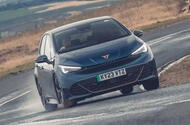Which electric cars now qualify for the UK’s new government grant?
If you’ve been eyeing an electric car but waiting for the right moment, there’s good news: the UK government has just expanded its Electric Car Grant (ECG) to include five more models. That means more choices, and—crucially—more savings for drivers looking to make the switch to electric. Let’s break down what’s changed, which cars are included, and what it means for you.
What’s the Electric Car Grant, and how does it work?
The ECG is the government’s latest effort to accelerate electric vehicle (EV) adoption by making them more affordable. Unlike previous schemes, this grant is automatically applied to the price of eligible cars—no paperwork or registration needed on your end. Depending on the vehicle’s environmental impact and where it’s built, buyers can get either £1,500 or £3,750 off the sticker price.
To qualify, a car must be priced at £37,000 or less in its entry-level trim. But there’s a twist: it’s not just about price. The car’s manufacturing and battery supply chain must meet strict, science-backed emissions criteria. That means the government is rewarding not just electric driving, but cleaner production too.
Which new models are now eligible for the ECG?
The latest update adds five popular models to the grant list:
– Cupra Born
– Peugeot e-208
– Peugeot e-2008
– Peugeot e-Rifter
– Volkswagen ID 3
These join a roster of 24 cars now eligible for the grant. For many, the £1,500 discount is a meaningful chunk off already competitive prices. For example, the Cupra Born now starts at £34,190, and the Volkswagen ID 3 at £29,360—before factoring in the grant.
How much do the eligible EVs cost after the grant?
Here’s a snapshot of what you can expect to pay for some of the newly eligible and existing ECG models (prices before the grant):
– Citroën ë-C3: £20,595
– Renault 5: £21,495
– Nissan Micra: £21,495
– Vauxhall Frontera Electric: £22,495
– Renault 4: £25,495
– Vauxhall Corsa Electric: £26,005
– Citroën ë-C4: £26,150
– Volkswagen ID 3: £29,360
– Peugeot e-208: £28,650
– Peugeot e-Rifter: £30,750
– Vauxhall Mokka Electric: £31,005
– Nissan Ariya: £33,500
– Cupra Born: £34,190
– Vauxhall Grandland Electric: £35,455
With the grant applied, these prices drop further, making EVs more accessible than ever for UK drivers.
Why do some cars get a bigger discount than others?
The ECG isn’t a flat-rate grant. Instead, the amount depends on how green the car’s production process is. If a model’s manufacturing and battery supply chain have a particularly low carbon footprint, it can qualify for the higher £3,750 grant. Most of the newly added cars, however, fall into the £1,500 bracket.
This approach is designed to encourage manufacturers to clean up their supply chains—not just their tailpipes. For instance, the Nissan Leaf, built in Sunderland with locally sourced batteries, is in a strong position to benefit from the maximum grant. In contrast, models like the Citroën e-Berlingo and Vauxhall Combo Life Electric, despite being assembled in the UK, only qualify for the lower discount because their batteries are imported.
Are there any catches or limitations to the grant?
There are a few important details to keep in mind. First, only cars priced at £37,000 or less in their base trim are eligible. Second, the emissions criteria are strict, and the government hasn’t published the exact thresholds yet. This means some EVs—especially those built in countries with higher manufacturing emissions—may not qualify, even if they’re affordable.
It’s also worth noting that the ECG is applied automatically at the point of sale. You don’t need to fill out forms or claim the discount yourself. However, there have been concerns about possible loopholes, such as manufacturers self-registering vehicles to claim the grant. The government is aware of these issues and is expected to monitor the scheme closely.
How does this compare to previous EV incentives?
If you remember the Plug-in Car Grant (PiCG), you’ll notice some key differences. The ECG is more targeted, with stricter emissions criteria and a focus on encouraging cleaner manufacturing. It’s also more streamlined for buyers, since the discount is applied automatically.
The PiCG was phased out in 2022 after helping more than half a million drivers go electric, according to government data. The ECG aims to build on that momentum by supporting both consumers and the UK’s growing EV manufacturing sector.
What does this mean for the future of EVs in the UK?
Industry leaders are optimistic. James Taylor, managing director of Nissan GB, called the ECG a clear signal that the government is prioritising EV adoption and affordability. With new models like the Sunderland-built electric Juke, Qashqai, and Leaf on the horizon, the UK is positioning itself as a hub for clean vehicle manufacturing.
Transport secretary Heidi Alexander summed it up: This summer, owning an electric car is becoming cheaper, easier, and a reality for thousands more people across the UK.
For buyers, the takeaway is simple. If you’ve been considering an EV, now’s a great time to take a closer look. The expanded grant, combined with a growing range of affordable models, means there’s never been a better moment to make the switch—and help drive the UK toward a cleaner, greener future.

